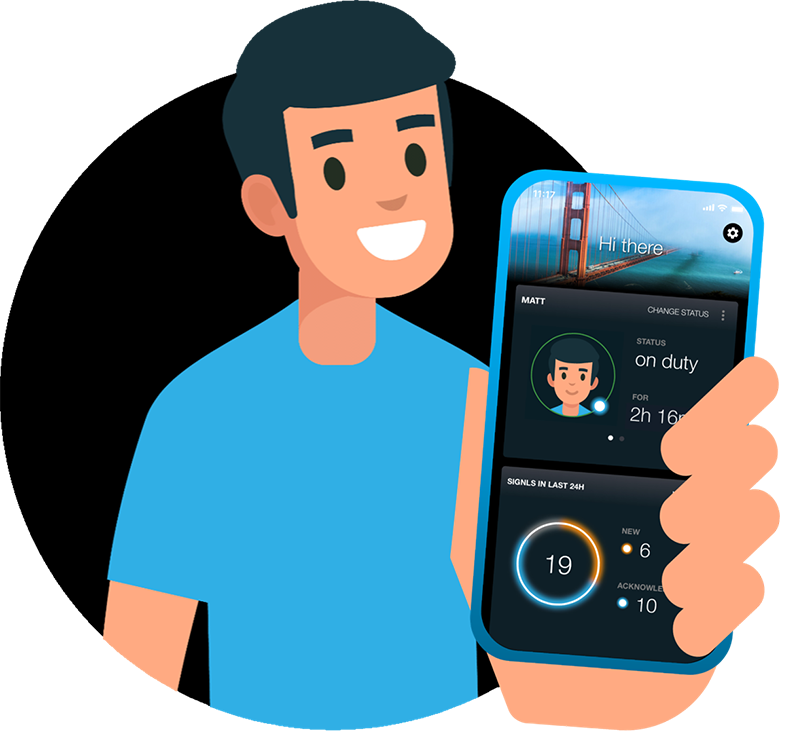Modern alerting systems based on mobile apps can achieve significant efficiency gains in healthcare and reduce the working pressure on nursing staff. Here we describe how such a solution is used for patient and bedside monitoring.
Challenges in patient bedside monitoring in hospitals
In a hospital, there is an existing patient monitoring system (bedside monitoring system, continuously measuring vital signs ). In case of an alarm, it is signaled acoustically and by a lamp in the central room. In practice, however, nursing staff are rarely in this room as they do not carry out their core activities there. This means that alarms are only detected late and corresponding measures are delayed. The aim is to reach the nursing staff anywhere in station ward as quickly as possible and provide them with the information they need in order to decide what further measures need to be taken.
Solution with a mobile app for alerting
Derdack offers with SIGNL4 an app-based alerting service for emergency and ward teams. In this case, the connection to the system for patient monitoring is simple and flexible via an IT standard interface (and a secure connection).
Alarms in the patient monitoring system are enriched with necessary information (location, patient id, conditions) and transmitted directly to the smartphones of the nursing staff on duty. The signaling is done by a custom (and correspondingly loud) ring tone, vibration and a visual push-notification for each type of alarm. The appropriate nursing staff can accept the alarm and make a decision about the next steps. In the mobile app, other nursing staff on duty and, if necessary, ward managers or the physician on duty can also see who has taken over an alarm or whether alarms are unhandled. If alarms remain open, they are sent again at regular intervals until an acknowledgement is made. Staff can also use text or voice input to annotate an alarm with measures taken.
Checking in and out at the beginning and end of a shift is carried out at the push of a button in the mobile app. All working hours are recorded and logged. All alarms of previous shifts are also displayed, so that better shift handover is supported. A minimum number of people who need to be on duty per shift can be specified and monitored.
Impressive Results
Nurses can now move around freely and carry out their normal activities without having to miss an alarm or constantly check the rooms. An alarm is triggered reliably, promptly and independently of the location and a fast response time is thus guaranteed.
Further advantages in detail:
- Cost-effective, as existing smartphones can continue to be used and no additional infrastructure is required
- Quick to use, easy to integrate
- Safe alarming through persistent signalling (repeats), redundant transmission media (WLAN, LTE), multiple user alarming and ringing plus vibration
- High user acceptance, since no additional equipment is required for the nursing staff
- Scalable, in terms of the number of teams, users and alerting scenarios
- Targeted alerting of the required nursing staff (and only to them)
- Clear responsibilities. Colleagues can see who has taken over what
- Feedback with additional information and easy collaboration
- Clear and relevant information
- Data protection compliant, through certified data centers, as well as secure communication
- Simple operation, no training required
- Simple standby planning without “magnetic board” or “Excel”. Users can simply log in and log out themselves (with reminder function)
- Easy integration with different systems
- Use of custom colors and icons for different alarm categories and priorities
Alternative ways to trigger an alarm
As an alternative to existing systems, you can manually triggering alarms in less critical cases, i. e. when patients can act on their own, is possible, e.g. via WLAN button or even via Amazon Alexa via voice control.
Try it now
You can test SIGNL4 immediately and free of charge. Just download the app and register.




